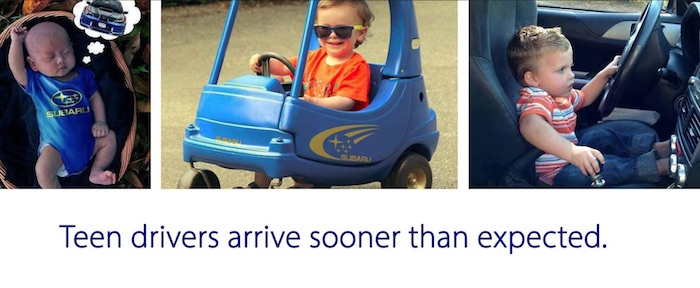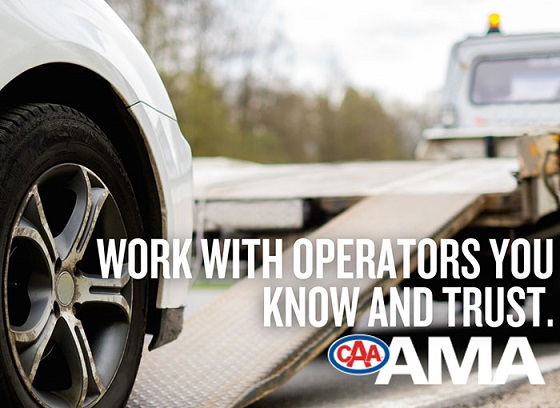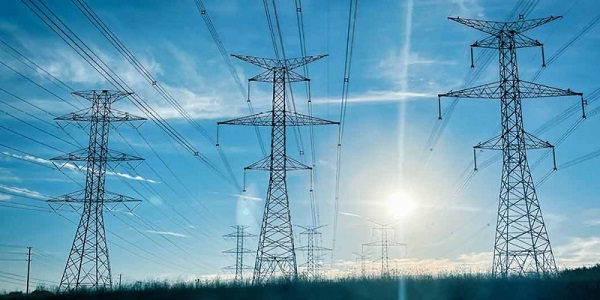Automotive
Eight safe and reliable Subaru Models you should consider for your teen driver

Eight Subaru Models Recommended for Teen Drivers
As a parent, I vividly remember the day I held my child in my arms for the first time, overwhelmed with a mixture of joy, love, and a touch of anxiety about the future. Little did I know that time would pass in the blink of an eye, and before I knew it, my child would be eagerly waiting to obtain their driver’s license. It’s remarkable how fast they grow up. When it comes to selecting a car for a teen driver, safety and reliability become paramount concerns for us as parents. This is where Subaru shines, as a brand renowned for its unwavering dedication to safety and durability. In fact, among the vast array of Subaru models, there are eight standout vehicles that receive high recommendations for young drivers. These models include four in the new vehicle category and four in the used vehicle category, all achieving the coveted Best Choice rating. Join me as we delve into the details of eight Subaru models that are the perfect fit for our teen drivers.
Used Vehicle Category:
Subaru Impreza (2018MY, 2022MY): The Subaru Impreza is a compact car that offers excellent safety features, including all-wheel drive (AWD) and Subaru’s EyeSight driver-assist system. It has a reputation for reliability and comes in both sedan and hatchback variants, offering versatility and practicality.
Subaru Legacy (2013-2021MY; built after August 2012): The Subaru Legacy is a midsize sedan that combines safety, comfort, and durability. With its spacious interior and advanced safety technologies, such as adaptive cruise control and lane departure warning, the Legacy provides peace of mind for both parents and teen drivers.
Subaru Forester (2018MY or newer): As a compact SUV, the Subaru Forester offers a higher driving position and ample cargo space. Its symmetrical AWD system provides excellent traction, making it a reliable choice for teen drivers, especially in areas with challenging weather conditions.
Subaru Outback (2015-2018MY, 2022MY): The Subaru Outback is a versatile crossover that strikes a balance between ruggedness and comfort. It offers generous cargo capacity, advanced safety features, and a capable AWD system, making it an ideal choice for adventurous teens and families alike.
New Vehicle Category:
Subaru Legacy: A midsize sedan, the Legacy has earned its spot among the recommended new vehicles due to its exceptional safety record and overall performance. With its spacious and comfortable interior, advanced safety technologies, and reliable handling, the Legacy offers a balanced and enjoyable driving experience.
Subaru Outback: For those seeking a versatile and capable crossover, the Outback is an excellent choice. Boasting a spacious cabin, generous cargo capacity, and Subaru’s renowned symmetrical all-wheel drive system, the Outback provides a confident and safe ride on various road conditions.
Subaru Forester: A compact SUV, the Forester stands out as a recommended new vehicle due to its combination of practicality, safety, and reliability. With ample cargo space, excellent visibility, and advanced safety features, the Forester is well-suited for both daily commutes and weekend adventures.
Finally, the Subaru Ascent, a three-row SUV, has garnered accolades for its spaciousness, comfortable seating, and impressive safety features. With its refined interior, robust performance, and ample room for passengers and cargo, the Ascent offers families a reliable and enjoyable driving experience.
Subaru’s Commitment to Safety and Reliability:
Subaru has a strong reputation for producing vehicles that prioritize safety and reliability. In fact, Subaru has earned more Insurance Institute for Highway Safety (IIHS) Top Safety Pick+ awards than any other brand since 2013*. This recognition highlights Subaru’s dedication to building vehicles that offer the highest level of protection for drivers and passengers alike.
Furthermore, Consumer Reports consistently ranks Subaru as the best mainstream automotive brand, further reinforcing the brand’s commitment to quality and customer satisfaction. Subaru’s reputation for reliability makes it a wise choice for parents seeking a vehicle that will keep their teen drivers safe and secure.
In conclusion, when it comes to selecting a car for a teen driver, Subaru offers a wide range of models that excel in safety, reliability, and overall quality. With four models recommended in both the used and new vehicle categories, Subaru provides options that suit different preferences and budgets. By choosing a Subaru for your teen driver, you can have peace of mind knowing that they are behind the wheel of a vehicle that prioritizes their safety and well-being.
*Please note that the information regarding IIHS TSP+ awards is accurate as of the knowledge cutoff date in September 2021.
Alberta
Your towing rights! AMA unveils measures to help fight predatory towing

From the Alberta Motor Association
Know Before the Tow: Towing Rights in Alberta
Predatory towing is a growing concern in major cities across the province. The Alberta Motor
Association (AMA), in partnership with the Calgary Police Service and Calgary Fire Department,
wants to ensure Albertans are not only aware of this emerging issue but also know how to stop
it.
Today, AMA launches Know Before the Tow—a new, provincewide awareness campaign that
empowers Albertans with the knowledge needed to stay confident and in control when faced with
a tow scam. The campaign features a list of five key towing rights that every Alberta driver should
know:
1. You have the right to refuse unsolicited towing services.
2. You have the right to choose who tows your vehicle, and where, unless
otherwise directed by police.
3. You have the right to access your vehicle to retrieve personal items during a
storage facility’s business hours.
4. You have the right to ask if the towing company receives a kickback for taking
your vehicle to a particular storage facility or repair shop.
5. You have the right to a quote prior to service, and an itemized invoice prior to
making payment.
“Being in a collision or broken down at the roadside is stressful enough; the last thing any Albertan
needs is high pressure from an unscrupulous tower,” says Jeff Kasbrick, Vice-President,
Advocacy and Operations, AMA. “These towing rights are clear and remind every Albertan that
they’re in the driver’s seat when it comes to who they choose to tow their vehicle.”
Edmonton and Calgary in particular are seeing increasing reports of predatory towing. Unethical
operators will arrive at a collision or breakdown scene uninvited, create a false sense of urgency
to remove the vehicle, and ultimately leave drivers facing huge fees.
Starting today, Albertans can visit ama.ab.ca/KnowBeforeTheTow to download a digital copy of
their towing rights, helping them feel confident if faced with a tow scam. And soon, all AMA centres
will offer free print versions, which are small enough to tuck in a glovebox.
“Alberta’s towing industry is still highly reputable, with the vast majority of operators committed
to fair and professional service. In fact, AMA and our roadside assistance network is proud to
represent 80% of all private-passenger tows in the province, so our members can be confident
that we’ll always protect them—just as we have for nearly 100 years,” says Kasbrick.
“By knowing your rights and choosing trusted providers like AMA, you can avoid unnecessary
stress, costs, and uncertainty. Because the road to recovery after a collision shouldn’t have to
include fighting for your vehicle.”
Sergeant Brad Norman, Calgary Police Service Traffic Section, says law enforcement continues
to work diligently with first responders and community partners like AMA to put the brakes on
predatory towers, who “are showing up at collision sites and pressuring overwhelmed and
frightened victims into paying high towing rates.”
“Our priority is to ensure the safety of collision victims, the public, and first responders at
collision sites. Part of this effort is educating motorists about their rights so that they Know
Before the Tow that they can say no to unsolicited towing services and choose a reputable
tower of their choice instead,” says Norman. “No one deserves to be taken advantage of after
being involved in a collision.”
To learn more, and to view an expanded version of Alberta towing rights, visit
ama.ab.ca/KnowBeforeTheTow
Automotive
‘A Lot Of Government Coercion’: Study Slams ‘Forced Transition’ To EVs Consumers Don’t Seem To Want


From the Daily Caller News Foundation
By Owen Klinsky
The push for electric vehicle (EV) adoption is largely premised on misleading claims, and could bring enormous costs for U.S. consumers and the economy, a new meta-study shared exclusively with the Daily Caller News Foundation found.
Federal regulators and multinational corporations have attempted to push EVs on the American public in recent years, with the Biden-Harris administration introducing strict tailpipe emissions standards, and major automakers implementing lofty electric production targets. However, widespread EV adoption may not be as feasible as lawmakers and auto executives once claimed, with a new meta-analysis from the Institute for Energy Research (IER) noting EVs can have a variety of drawbacks for consumers when compared to their gas-powered counterparts, including elevated upfront costs, lower resale values, limited driving range and a lack of charging infrastructure.
“We argue the EV transition is going to take a lot of government coercion to make happen,” Kenny Stein, vice president of policy at IER and the study’s lead author, told the DCNF. “It is a very difficult process, and it is not a very desirable process to force.”
When Government Chooses Your Car Study; Institute for Energy Research (IER)
Much of the reason a U.S. EV transition will not occur without government force, according to the study, is cost. The price of an average EV in the first quarter of 2024 was $53,048, compared to just $35,722 for conventional vehicles, according to car shopping guide Edmunds, meaning many EVs continue to be less affordable than their gas-powered counterparts even with the U.S. Treasury Department’s $7,500 tax credit.
The IER study also cites elevated depreciation as a constraint on EV adoption, noting that the average five-year depreciation for an electric car is $43,515 compared to $27,883 for a gas-powered vehicle, according to vehicle valuation company Kelley Blue Book. The rapid depreciation is largely driven by battery replacement costs, which range from $7,000 to as much as $30,000.
In addition to sheer cost, the study found “range anxiety” — the concern among drivers that they will run out of charge before reaching their destination or a charging station — is a major source of consumer reluctance to purchase EVs. While “range anxiety” can be reduced by increasing mileage, expanding an EV’s range requires a larger battery, which in turn drives up vehicle cost and creates a difficult tradeoff for consumers.
A lack of charging infrastructure also contributes to range concerns, and has proven difficult to fix despite ample government funding, the study found. For example, the bipartisan infrastructure bill of 2021 allotted $7.5 billion to subsidize thousands of new EV charging stations, but only seven stations in four states had been built as of April.
The combination of range issues and high costs has helped drive a slackening in EV demand, with EV sales growing 50% in the first half of 2023 and 31% in the first half of 2024, less than the 71% increase in the first half of 2022. Moreover, a June poll from The Associated Press-NORC Center for Public Affairs Research and the University of Chicago’s Energy Policy Institute found 46% of respondents were “unlikely” or “very unlikely” to purchase an EV, while just 21% were “very” or “extremely” likely to make the change.
If thousands of new charging stations are built and demand rises due to the alleviation of range concerns, the transition would create a variety of new infrastructural challenges, namely that it would reduce the reliability of an already constrained U.S. power grid.
“Up until two years ago or so, electricity demand in the United States was flat so nobody worried about running out of electricity. But with the data center boom and AI [artificial intelligence], there’s been a sudden spike in demand for electricity, and demand is expected to continue growing,” Stein told the DCNF. “Now you’re suddenly talking about not having enough electricity to supply everyday use at the same time we are trying to force pre-existing transportation systems to run on electricity. When you combine that EVs are more expensive and less flexible with the possibility we may be running out of electricity to keep homes cool and to operate industrial facilities, the logic of pursuing [the EV transition] gets even worse.”
Electricity demand has grown by 1.3% annually for the past three years — more than double the average growth rate from 2010 to 2019, according to the Federal Reserve Bank of Kansas City. The surge has been driven largely by a boom in artificial intelligence and data centers, with commercial electricity accounting for 60% of growth in total U.S. power demand between 2021 and 2023.
On the supply side, the Biden-Harris Environmental Protection Agency (EPA) has pushed to reshape the power grid by effectively requiring America’s existing coal plants will have to use carbon capture and storage (CCS) technology to control 90% of their carbon emissions by 2032 if they want to stay running past 2039, and certain new natural gas plants will have to cut their emissions by 90% by 2032. The EPA rule “leaves coal-heavy regions, like the one covered by the Midcontinent Independent System Operator, vulnerable to reliability problems in the near future,” Isaac Orr, a policy fellow for the Center of the American Experiment who specializes in grid analysis, previously told the DCNF.
Grid reliability is already wavering, with hundreds of millions of Americans at risk of experiencing power shortages this winter if weather conditions are harsh, according to power grid watchdog the North American Electric Reliability Corporation (NERC).
The IER study also identifies a set of “myths fueling electric vehicle policy,” including that EVs are necessarily better for the environment.
“One of the biggest sources of emissions from vehicles is tire wear, because tires are made primarily from oil, and as your tires roll along the ground, they degrade and release particulates into the air,” Stein told the DCNF. “Electric vehicles are much heavier than gas-powered cars due to their batteries, which requires them to have heavier tires that wear faster, so EVs actually have much higher particulate emissions than comparable internal combustion engine vehicles.”
A 2020 study from environmental engineering consultancy Emissions Analytics found particulate wear emissions were 1,000 times worse than exhaust emissions, with later research conducted by the consulting firm finding a Tesla Model Y produced 26% more tire emissions than a comparable hybrid vehicle.
Additionally, the IER study notes EVs require six times the mineral inputs of conventional cars, which in turn calls for emissions-intensive mining processes that produce toxic waste.
“For average Americans, the tradeoff calculation obviously is not working,” the study’s authors wrote. “This is not due to misinformation; indeed… there is plenty of pro-EV misinformation. It is simply that…there are negative tradeoffs to EVs. In designing policy, these negative factors must be considered rather than simply ignored.”
-

 Daily Caller2 days ago
Daily Caller2 days agoTrudeau’s Liberal Gov’t Tears Itself Apart As It Scrambles To Address Trump’s Tariff Threats
-

 National2 days ago
National2 days agoFreeland Resignation Reaction: Pierre Poilievre Speaks to Reporters in Ottawa
-

 COVID-192 days ago
COVID-192 days agoAustralian doctor who criticized COVID jabs has his suspension reversed
-

 National2 days ago
National2 days agoPaul Wells, Jen Gerson, and Justin Ling on Freeland and the Liberals’ future, if any
-

 National2 days ago
National2 days agoConservative Deputy Leader demands immediate election call
-

 Business2 days ago
Business2 days agoMassive growth in federal workforce contributes to Ottawa’s red ink
-

 illegal immigration2 days ago
illegal immigration2 days agoDelusional Rumour Driving Some Migrants in Mexico to Reach US Border
-

 conflict24 hours ago
conflict24 hours agoTrump has started negotiations to end the war in Ukraine






